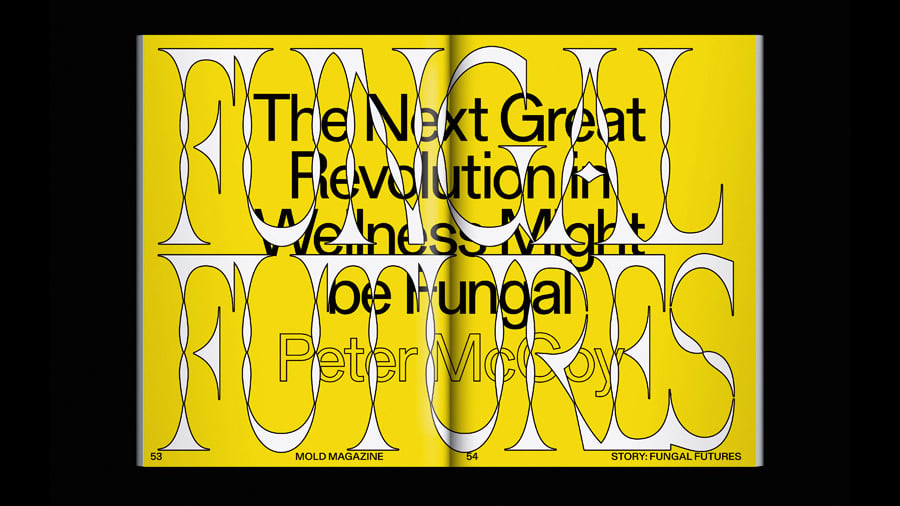
July 27, 2017
Straight for the Gut: MOLD Positions Food as the Next Design Frontier
With ambitions to tackle the global food crisis, the new design pub isn’t your typical feel-good foodie mag.
Two years ago, design journalist LinYee Yuan was working on a story about a set of eight, striking black-and-white posters created by designer Gemma Warriner to visualize the full extent of the global food crisis. Yuan was floored by one of the facts on the posters: by the year 2050, the world’s food supply will have to sustain nine billion people.
“It’s a totally terrifying statistic,” says Yuan. Long after her story was published, that one, powerful sentence lodged itself top-of-mind for Yuan. Her editor’s radar became highly attuned to design projects that addressed food shortages, waste, and new technologies around production.
Yuan’s passion for food design wasn’t new. In 2013, she’d started a website, This Is Mold, publishing hundreds of stories about a wide range of food innovations like edible Christmas trees and tabletop systems for farming mealworms at home.
The ideas on Yuan’s site were so unusual that Quartz, the startup global news platform owned by Atlantic Media, began syndicating one or two stories from Yuan’s site per week. Her stories were being read in 20 countries, and her social media platforms drew over 40,000 followers. Yuan knew she was onto something, and encountering the food crisis statistics in 2015 only added to her sense of urgency.
Yuan decided to galvanize her contacts in both the editorial and the design worlds to amplify the conversation about the future of food. In March of this year, she launched a Kickstarter campaign for a new, bi-annual magazine that would celebrate design “as an agent of change in our food system.” Within 30 days, over 700 backers contributed $37,000 to make it happen.
MOLD’s first issue is, as Yuan describes it, “challenging” on purpose. She knew the publication would have to be “an artifact” itself to gain real attention in the design world. “There’s no reason to print something unless it’s worth the paper it’s printed on,” she says.
Readers encounter highly-layered—and not all easy-to-decipher—original fonts and freshly-commissioned illustrations and fine art photography.
The theme of the first issue is equally unconventional: microbes. Specifically, it imagines the human gut as a design space. Feature stories include a bacterial design project that colors your feces to send you bright signals about your health and self-cleaning Japanese toilets that also analyze your urine.
It’s a lot to digest, and Yuan has no plans to settle on more comfortable topics in future issues. She sees MOLD as a platform where the brightest design minds are encouraged to tackle the global food crisis in their own, uninhibited ways.
“Designers have a superpower,” she says. “They can help us reframe things, and ask the right questions to offer human-centered solutions.”
If you enjoyed this article, you may also enjoy “Food Wizards Bompas & Parr Mix Willy Wonka With Makerbot.”
Recent Viewpoints
Viewpoints
Navigating the Path to Net Zero










